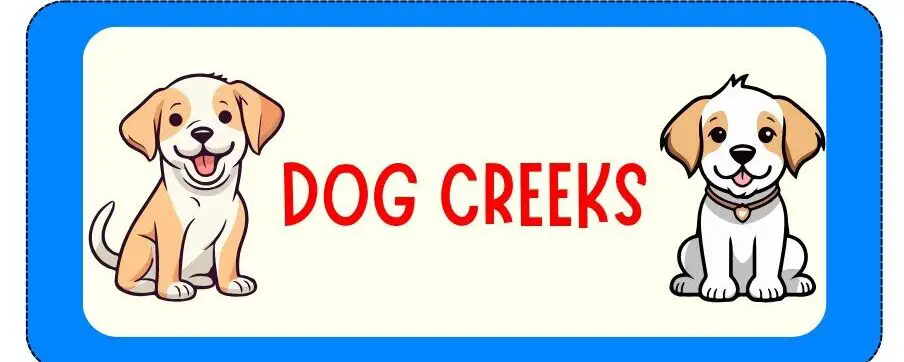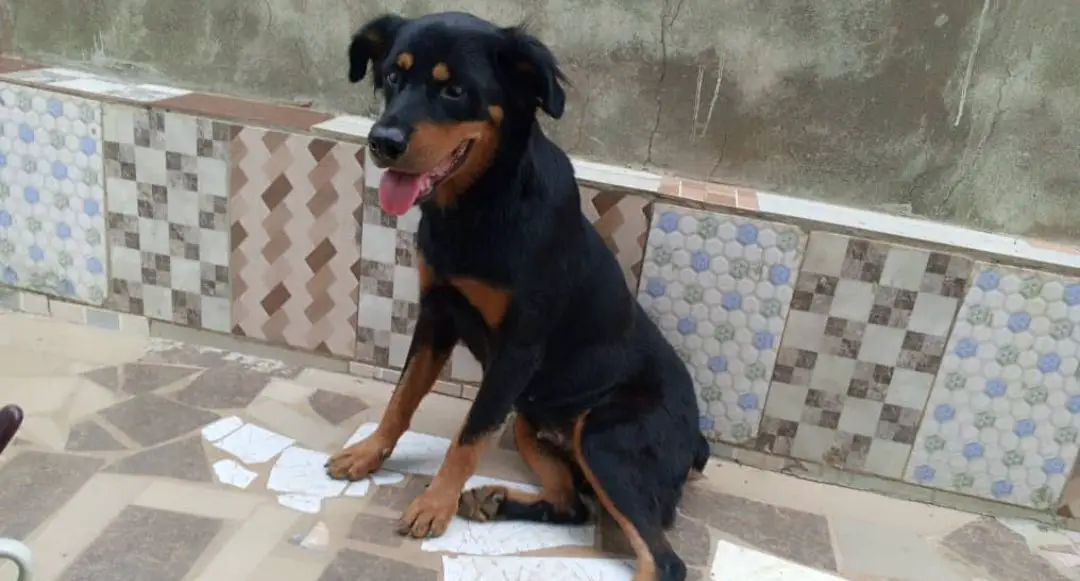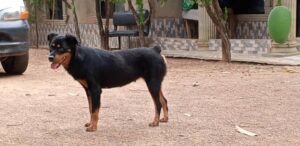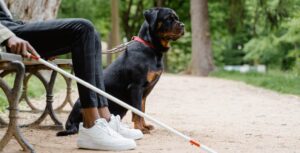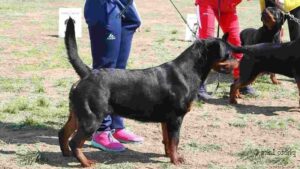Are you tired of dealing with your dog behavior problems? From excessive barking to destructive chewing, dog behavior problems can be challenging.
But fear not, because this blog post will explore effective strategies to help you understand and address these common dog behavior issues.
As a long-time dog owner, I can tell you that I have dealt with most of the problems I discussed here…
Keep reading to find out more!
Dog Behavior Problems
Based on my experience living with dogs and my chat with other dog owners in my group, I can tell you that there are a lot of problems dog owners face daily.
So, here are some of the most common dog behavior problems and my suggestions on how to address them:
Excessive Barking
Based on my experience and that of my friends who own a dog, excessive barking is the most common behavior problem in dogs that can be frustrating for owners and their neighbors.
Dogs bark for various reasons, such as boredom, anxiety, or to get attention which is a normal behavior, but when the barking becomes excessive it becomes a serious behavior concern in dogs.
To identify excessive barking, look for patterns in your dog’s behavior, such as barking at the same time every day or in response to specific triggers.
To address excessive barking in dogs, try the following ideas:
- I recommend providing your dog with plenty of exercise and mental stimulation to reduce boredom and anxiety.
- I also suggest you teach your dog the “quiet” command using positive reinforcement.
- You should try to ignore your dog when they bark for attention and reward them when they are quiet.
- I advise using calming aids, such as pheromone diffusers or anxiety wraps, to help soothe your dog.
To prevent excessive barking in dogs at first, I strongly recommend you socialize your dog from a young age and expose them to various environments and people.
You should always provide your dog with plenty of toys and activities to keep them engaged and prevent boredom.
Destructive Chewing

Destructive chewing is another common behavior problem in dogs, and my Rottweiler does chew things when they get bored at home.
Based on my experience with dogs, I can tell you that most active dogs chew for various reasons, such as teething, boredom, or anxiety.
To identify destructive chewing in dogs, look for signs of damage to your belongings, such as torn furniture or chewed electrical cords.
To address destructive chewing in dogs, try the following:
- In my opinion, I recommend you provide your dog with plenty of appropriate chew toys and rotate them to keep things interesting.
- I also advise you to supervise your dog when they are in areas with valuable items and redirect their chewing to appropriate toys.
- Based on my experience, I also suggest you use bitter sprays or other deterrents on items you don’t want your dog to chew.
- Finally, I advise you to provide your dog with plenty of exercise and mental stimulation to reduce boredom and anxiety.
To prevent destructive chewing in your dog, I recommend you teach your dog the “leave it” command and reward them for leaving items alone.
Also, you should always provide them with plenty of appropriate chew toys and rotate them regularly to keep things interesting.
Jumping on People
Jumping on people is a common behavior problem in dogs that can be annoying and even dangerous in certain situations.
From what I know about dogs jumping, I can tell you that dogs jump on people for various reasons, such as excitement, poor socialization, or to get attention.
To identify jumping in dogs, look for your dog jumping up on people when they arrive or when they are greeting new people.
To address jumping in dogs, try the following:
- I advise you to teach your dog the “off” command and reward them when they have all four paws on the ground.
- You should also ignore your dog when they jump and reward them when they have all four paws on the ground.
- Use a leash or head halter to control your dog’s jumping and redirect their attention to a toy or treat.
In my opinion, to prevent jumping in dogs, socialize your dog from a young age and teach them appropriate greeting behaviors.
You should also provide your dog with plenty of exercise and mental stimulation to reduce excitement and boredom.
Excessive Digging
Excessive digging is a common behavior problem in dogs that can be frustrating for owners.
My dog does dig, so I can tell you boldly that dogs dig for various reasons, such as boredom, anxiety, or instinctual behavior.
To identify excessive digging in dogs, look for patterns in your dog’s behavior, such as digging in the same spot every day or in response to specific triggers.
To address excessive digging in dogs, you should try the following:
- Provide your dog with plenty of exercise and mental stimulation to reduce boredom and anxiety.
- Create a designated digging area, such as a sandbox, and encourage your dog to dig there by burying treats or toys.
- Use deterrents, such as chicken wire or fencing, to protect areas you don’t want your dog to dig.
- Supervise your dog when they are in areas where digging is not allowed and redirect their digging to the designated area.
To prevent excessive digging in dogs, provide your dog with plenty of physical and mental stimulation.
Teach your dog the “leave it” command and reward them for leaving areas alone.
Consider providing your dog with a job, such as agility training or scent work, to channel their energy and instincts.
Separation Anxiety

Separation anxiety is a common behavior problem in dogs that can be distressing for both dogs and owners.
Dogs with separation anxiety exhibit behaviors such as destructive chewing, barking, or pacing when left alone.
To identify separation anxiety in dogs, look for signs of distress when you leave your dog alone, such as destructive behavior or vocalization.
To address separation anxiety in dogs, I suggest you try the following:
- Gradually increase the time you are away from your dog, starting with short periods and rewarding them for calm behavior.
- Leave a familiar object with your scent, such as a t-shirt or toy, to provide comfort.
- Provide your dog with plenty of exercise and mental stimulation before leaving them alone to reduce anxiety.
- Consider using calming aids, such as pheromone diffusers or anxiety medication, under the guidance of a veterinarian.
To prevent separation anxiety in your dog, you should socialize your dog from a young age and expose them to various environments and people.
I suggest you gradually increase the time you are away from your dog, starting with short periods, and reward them for calm behavior.
You should also consider providing your dog with a job, such as agility training or scent work, to channel their energy and reduce anxiety.
Pulling on the Leash
Pulling on the leash is a common behavior problem in dogs that can be frustrating for owners.
Dogs pull on the leash for various reasons, such as excitement or to get to a destination quickly.
To identify pulling on the leash, look for your dog pulling on the leash during walks.
To address pulling on the leash, you should try the following:
- Use a harness instead of a collar to reduce discomfort and encourage your dog to walk by your side.
- Teach your dog the “heel” command and reward them for walking by your side.
- Use a head halter to control your dog’s pulling and redirect their attention to a toy or treat.
- Practice loose-leash walking by stopping and rewarding your dog when they are by your side.
To prevent pulling on the leash, socialize your dog from a young age and teach them the “heel” command.
Provide them with plenty of exercise and mental stimulation to reduce excitement and boredom.
Consider using a harness instead of a collar to reduce discomfort and encourage your dog to walk by your side.
Excessive Begging
Excessive begging is a common behavior problem in dogs that can be challenging for pet owners.
Dogs beg for various reasons, such as seeking attention, food, or out of habit.
To identify excessive begging in dogs, look for persistent begging behaviors, such as whining, pawing, or staring during mealtimes or when you’re eating.
To address excessive begging in dogs, you should try the following:
- Firstly, I strongly recommend you try and ignore your dog’s begging behavior and avoid giving in to their demands.
- Establish a designated feeding schedule and stick to it to discourage begging.
- Teach your dog the “go to your place” command and reward them for staying in their spot during mealtimes.
- Provide your dog with interactive toys or puzzles to keep them occupied and mentally stimulated.
To prevent excessive begging in dogs, avoid feeding your dog from the table or sharing your food with them.
Instead, offer treats or rewards in a structured and controlled manner.
Ensure your dog is getting enough exercise and mental stimulation to reduce their focus on begging for food.
Chasing Other Animals

Chasing other animals is a common behavior problem in dogs that can be concerning and potentially dangerous for your dog.
Based on my experience, I can tell you that dogs chase other animals out of prey drive, curiosity, or territorial behavior.
To identify chasing behavior in dogs, observe your dog’s reactions to other animals, such as squirrels, cats, or birds, and their response when they see them.
To address chasing other animals in dogs, I suggest you try the following:
- Use a leash or long line to control your dog’s movements and prevent them from chasing other animals.
- Teach your dog the “leave it” command and reward them for ignoring other animals.
- Provide your dog with plenty of exercise and mental stimulation to redirect their energy.
- Consider enrolling your dog in obedience training or agility classes to improve their focus and impulse control.
To prevent chasing other animals, socialize your dog from a young age and expose them to various environments and animals.
Use positive reinforcement to reward calm behavior around other animals and reinforce the “leave it” command.
Supervise your dog when they are in areas where they may encounter other animals to prevent chasing behavior.
Food Guarding
Food guarding is another common behavior problem in dogs that can be concerning and potentially escalate into aggression if not controlled.
Dogs guard their food out of instinctual behavior or past experiences.
To identify food guarding in dogs, observe your dog’s behavior around their food bowl, treats, or toys and look for signs of aggression, such as growling or snapping.
To address food guarding in dogs, I recommend you try the following:
- Consult with a professional dog trainer or behaviorist for guidance on desensitization and counterconditioning techniques.
- Respect your dog’s space during mealtimes and avoid approaching them when they are eating.
- Use a behavior modification plan to gradually desensitize your dog to people approaching their food and teach them that it’s safe.
- Never punish your dog for food-guarding behavior as it can escalate aggression.
To prevent food guarding in dogs, I recommend you practice resource management by feeding your dog in a quiet, separate area and avoid disturbing them while they eat.
Teach your dog to associate people approaching their food with positive experiences, such as receiving treats or rewards.
Establish a routine around mealtimes to create a sense of predictability and security for your dog.
Not Answering When Called
Not answering when called is another common behavior problem in dogs that can be frustrating for most dog owners.
Dogs may ignore their owners’ calls due to distractions, lack of training, or selective hearing.
To identify this behavior in dogs, observe your dog’s response to their name or recall commands, such as “come” or “here.”
To address not answering when called in dogs, I advise you to try the following:
- Use positive reinforcement training to teach your dog to respond to their name and recall commands.
- Make recall a game by using fun and rewarding activities, such as hide-and-seek or fetch.
- Gradually increase the distance and distractions when calling your dog to improve their response.
- Avoid punishing or scolding your dog for not responding, as this can create negative associations.
To prevent not answering when called in dogs, start training your dog from an early age and make recall a consistent part of their routine.
Use positive reinforcement techniques and make recall a fun and rewarding experience.
Ensure your dog is getting enough exercise and mental stimulation to reduce distractions and improve their focus.
Inappropriate Urination or Defecation
Inappropriate urination or defecation is another common behavior problem in dogs that can be messy and frustrating.
Dogs may exhibit this behavior due to medical issues, lack of training, or anxiety.
To identify inappropriate urination or defecation, look for signs of accidents in the house, such as puddles or stools.
To address inappropriate urination or defecation in dogs, based on my experience, I recommend trying the following:
- Consult with a veterinarian to rule out any underlying medical issues.
- Establish a consistent potty schedule and take your dog outside frequently.
- Use positive reinforcement training to teach your dog to eliminate outside and reward good behavior.
- Watch for signs of anxiety or stress that may be contributing to the behavior and address them accordingly.
To prevent inappropriate urination or defecation, start housetraining your dog from an early age and establish a consistent routine.
Use positive reinforcement techniques and reward good behavior.
Ensure your dog is getting enough exercise and mental stimulation to reduce anxiety and stress.
Biting

Biting is a serious behavior problem in dogs that can be dangerous and concerning.
Most dogs may bite due to fear, anxiety, or play aggression.
To identify biting behavior in dogs, observe your dog’s body language, such as growling, snapping, or nipping.
To address biting on dogs, you should try the following:
- Consult with a professional dog trainer or behaviorist for guidance on addressing biting behavior.
- You should also teach your dog bite inhibition by offering them toys and treats of varying textures and sizes.
- Practice gentle play and handling to help your dog develop self-control and respect for personal space.
- Avoid punishing or physically correcting your dog for biting, as this can escalate aggression.
To prevent biting in dogs, I advise you to socialize your dog from an early age and expose them to various environments and people.
Teach your dog bite inhibition and gentle play techniques. Ensure your dog is getting enough exercise and mental stimulation to reduce anxiety and stress.
Supervise interactions between your dog and others, especially children, to prevent biting incidents.
Here’s valuable information on fun things to do with your dog.
Conclusion
In summary, a happy relationship with your furry friend depends on your ability to recognize and resolve canine behavior issues.
You may address problems such as excessive barking, destructive chewing, and other related difficulties by putting the ideas covered in this article into practice.
Remember that you can raise your puppy to be a well-mannered and content part of your family by being patient, consistent, and providing positive reinforcement.
